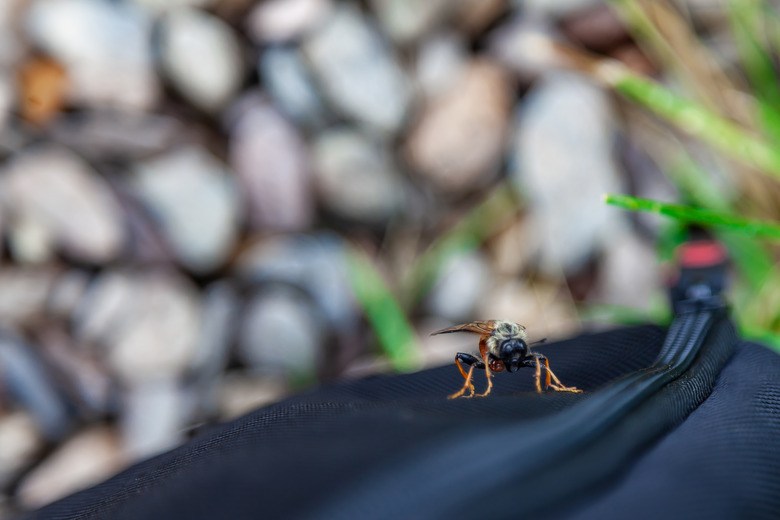What Attracts Horseflies?
Horseflies – and their relatives, the deer fly and the yellow fly – are loathed pests in the summer months that they use as their mating season. Though only the female flies of each species drink blood, the large insects' bites are painful and can cause rashes and minor infections. Because controlling the horse fly population and their biting is difficult, the most effective way of minimizing horse fly bites is simply knowing what attracts the insects: The information can make the difference between a pleasant day at the waterside and a miserable run back to the car.
TL;DR (Too Long; Didn't Read)
While only the female horse fly bites, the insects are difficult to control, making the best defense a knowledge of what attracts the horse fly. Dark colors – particularly the color blue – CO2 and fast movement are incredibly attractive to a horse fly, as are the results of such; body heat and body odor are particularly attractive. Horse fly traps tend to only mitigate bites, but covering most of the skin can ward away bites, as horse flies tend to target the head, neck and limbs of human targets.
Bites, Birth and Feeding
Bites, Birth and
Feeding
Only the female horse fly drinks blood, and the flies tend to be most active during the months of July and August; this is because the females of the species need blood from a vertebrae animal to give birth. Male horseflies and female flies looking for food consume only plant nectar. The flies hunt in cool areas near water and around soft earth when possible, as that environment is ideal for laying eggs. Keeping to dry, sunny areas can mitigate the risk of encountering horseflies as a result.
Bloody Attractions
Bloody Attractions
The female horse fly has a number of ways to detect potential food sources: The flies can identify CO2 emissions and body odor and will target sources of both. At the same time, horseflies are also attracted to the common causes of CO2 and body odor – fast movement and body heat will draw them near. In addition to these, the flies are attracted to wood smoke and dark colors. Blue in particular seems to be incredibly attractive to horse flies and should be avoided when traveling to waterside areas in the summer. Because these flies tend to target the head, neck and limbs, wearing hats, long-sleeved shirts and pants can act as a deterrent.
Horse Fly Trap and Control Methods
Horse Fly Trap and Control Methods
Unfortunately, few methods exist to control horse flies and minimize their biting. The risk of bites can be diminished, but presently there are no known options to eliminate the risk entirely. Horseflies are resistant to most bug sprays, though DEET and similar repellents can dissuade the insects somewhat. Horse fly traps exist, but their effectiveness varies. The traps consist of a large, dark-colored sphere set to move back and forth, often sprayed with some sort of animal musk or similarly attractive scent. This sphere is set below a bucket or similar container containing a sticky flytrap – horse flies attracted to the sphere fly up and, ideally, are trapped on the tape. Draining any standing pools of water around property to minimize the risk of horse fly infestations can also help.
References
- Penn State New Kensington Virtual Nature Trail: Deer Fly
- Wisconsin Horticulture: Deer Flies and Horse Flies
- University of Florida Featured Creatures: Deer Flies, Yellow Flies, and Horse Flies
- University of Kentucky Entomology: Horse Flies and Deer Flies
- Orkin: Horse Flies
- Independent: Horsefly Bites: Drain Paddling Pools to Stop Biting Insects Breeding, Say Experts as Reports Soar
- Terminix Blog: Is a Horse Fly Bite Dangerous?
Cite This Article
MLA
Flournoy, Blake. "What Attracts Horseflies?" sciencing.com, https://www.sciencing.com/attracts-horseflies-8669865/. 22 November 2019.
APA
Flournoy, Blake. (2019, November 22). What Attracts Horseflies?. sciencing.com. Retrieved from https://www.sciencing.com/attracts-horseflies-8669865/
Chicago
Flournoy, Blake. What Attracts Horseflies? last modified March 24, 2022. https://www.sciencing.com/attracts-horseflies-8669865/
